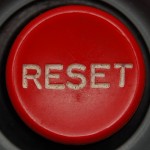
Harperites scrambling as public becomes aware of competitive prices for better planes.
by Geoffrey Stevens
That horrible grinding, smashing noise you may have heard from Ottawa a couple of weeks ago was the sound of the Stephen Harper government’s grand F-35 dream self-destructing.
The controversial plan to equip the Royal Canadian Air Force with 65 of the absurdly costly F-35 fighter jets had been in trouble for nearly three years. The coup de grace came, I believe, in a CBC Television report on Feb. 27. CBC senior political correspondent Terry Milewski reported new information: that Ottawa could save $23 billion over the lifetime of the aircraft if it purchased the F-18 Super Hornet, built by Boeing, rather than the F-35 Lightning from Lockheed Martin.
A saving of $23 billion? That’s a lot, even in Ottawa.
All aircraft are expensive these days. But the F-18 Super Hornet, Milewski reported, would cost half as much to buy (still a staggering $55 million per plane) as the F-35 and half as much to operate.
“Twin engines, dual redundant hydraulics … those are the things I don’t want to give up in flying to remote places or even in combat, because those are the things that’ll bring you home,” says Boeing test pilot Ricardo Traven, who served 15 years in the RCAF.
The Super Hornet has other attractions, aside from price. As the updated version of the old CF-18, which has served the Canadian Forces reliably for three decades, the Super Hornet would be familiar to Canadian pilots. Unlike the F-35, the Super Hornet is a proven performer. The US navy has 500 of them. Australia already has 24 and, tired of waiting for the F-35, wants an additional 24 Super Hornets.
Like its CF-18 ancestor, the Super Hornet is a twin-engine plane — a significant consideration for an aircraft that would be expected to patrol thousands of kilometres over coastal waters or Arctic expanses — while the F-35 has just one.
“Twin engines, dual redundant hydraulics… those are the things I don’t want to give up in flying to remote places or even in combat, because those are the things that’ll bring you home,” says Boeing test pilot Ricardo Traven, who served 15 years in the RCAF.
The Harper government made three big mistakes back in 2006 when it first tied Canada to the F-35 project. (It didn’t actually order any planes at that time, although it said in effect that if jobs and contracts came to this country’s aeronautical sector, Canada would be in.)
The first mistake was in not conducting an open competition to choose the new fighter. Instead, the government looked at Washington, saw the Pentagon loved the F-35, and looked no further. The fact that the F-35 was still just a concept, and not yet an operational warplane, made no difference.
Second, the government made no effort to determine whether any of the several other fighter aircraft on the market — the French Rafale, the Typhoon (built by a European consortium), the Swedish Gripen or the American Super Hornet — could meet Canadian requirements.
Third, I think officials in Ottawa were so dazzled by the F-35’s “stealth” technology, or so anxious to please Washington (or both), that they ignored the price tag. The government did its best to hide the cost as it soared — from $16 billion to $25 billion to $29.3 billion and on up.
Now it is nudging $50 billion and still rising. This is for a new aircraft that has had so many design and production problems that the planes spend more time grounded than airborne.
It was only after both the parliamentary budget officer and the auditor general sounded the alarm that Harper decided he would have to order a review of the F-35 decision. Last spring, the government declared it would “hit the reset button.”
What does “reset” mean?
But now that Canadian taxpayers have learned, courtesy of the CBC, that they could save $23 billion by buying a perfectly acceptable, sophisticated, proven and less expensive aircraft, there is no way politically that the Conservatives can go back to the F-35.
We don’t know what is happening with the review. It is being conducted in secret, naturally — openness being a difficult concept for Harper people to grasp.
But now that Canadian taxpayers have learned, courtesy of the CBC, that they could save $23 billion by buying a perfectly acceptable, sophisticated, proven and less expensive aircraft, there is no way politically that the Conservatives can go back to the F-35.
A “reset” button won’t do it. How about a “destruct” button?
© Copyright 2013 Geoffrey Stevens, All rights Reserved. Written For: StraightGoods.caOne Response to ““Reset” button on F-35s won’t work”
Sorry, the comment form is closed at this time.

 Cambridge resident Geoffrey Stevens, an author and former Ottawa columnist and managing editor of the Globe and Mail, teaches political science at Wilfrid Laurier University and the University of Guelph. He welcomes comments at the address below. This article appeared in the Waterloo Region Record and the Guelph Mercury.
Cambridge resident Geoffrey Stevens, an author and former Ottawa columnist and managing editor of the Globe and Mail, teaches political science at Wilfrid Laurier University and the University of Guelph. He welcomes comments at the address below. This article appeared in the Waterloo Region Record and the Guelph Mercury.
F35 – F18 – Who do we plan to kill with these weapons of mass destruction?
Ray Blessin
Kamloops